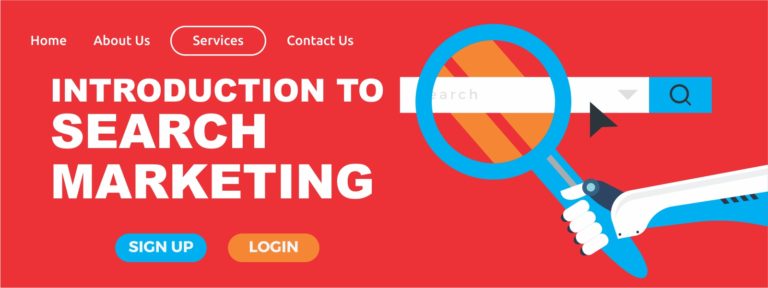
Introduction to Search Marketing (SEM and SEO)
Megha Yadav B.E(Hons.) CS, M.Tech (CS)
Assistant Professor,
Department of Computer Science
Experience: 8 Years
Apex University Jaipur
B.E(Hons.) CS, M.Tech (CS)
Assistant Professor,
Department of Computer Science
Experience: 8 Years
Apex University Jaipur
 B.E(Hons.) CS, M.Tech (CS)
Assistant Professor,
Department of Computer Science
Experience: 8 Years
Apex University Jaipur
B.E(Hons.) CS, M.Tech (CS)
Assistant Professor,
Department of Computer Science
Experience: 8 Years
Apex University Jaipur

- SEO (Search Engine Optimization) is an organic search strategy
- SEM (Search Engine Marketing ) is a paid Strategy

Why SEO is important
We know that paid advertising, social media, and other online platforms can generate huge traffic to websites, Organic search results appear more credible to searchers, and receive more clicks than paid advertisements. SEO is one of the only online marketing channels that, once set up, can continue to pay dividends over time. If you provide a relevant and updated content that deserves to rank for the right keywords then your traffic can increase over time. What are some SEO strategies or techniques? SEO activities typically fall into three categories: on-page SEO , off-page SEO and Technical SEO- On-page SEO: On-page SEO refers to optimization techniques that happen on your website, like updating a title tag, publishing a new blog post, improving page speed, keyword research, content creation, and keyword optimization. You have complete control over on-page SEO .
- Off-page SEO: Off-page SEO refers to optimization techniques that happen off your website, like conducting outreach, optimizing social media profiles, sharing content. Link building (acquiring high-quality backlinks) from other websites and managing local listings and directory profiles. When many websites link to a brand’s website, it really shows search engines that the brand’s website is trustworthy, reliable, and reputable, which increases its rankings on search Engines.
- Technical SEO optimizes the non-content elements of a website and the website as a whole to improve its backend structure and foundation. These strategies a site speed, mobile friendliness, indexing, crawl ability, site architecture, structured data, and security. Technical SEO improves both user and search crawler experience, which leads to higher search rankings.
What is SEM
Search engine marketing refers to paid search marketing, a system where businesses pay Google to show their ads in the search results. It involves the promotion of websites by increasing their visibility in search engine results pages through paid advertising. With SEM, brands pay for ads to appear as search results on search engine results pages (SERPs). They target select keywords so that when a user searches for those terms, they see an ad from the brand. The brand is charged only if a user clicks on the ad. Paid search ads can be found on almost any search results page. These paid placements are typically located at the top and right side of the page. They include an “Ad” designation to let users know that it is a paid advertisement. Why SEM is Important? SEM is an important conversion method for marketing campaigns. The reason is because paid ads are commonly linked to conversion-focused landing pages or sales pages that move web traffic through the sales funnel. SEM results in immediate impact. Search engine marketing is also alternately referred to as paid search or pay per click (PPC). PPC stands for pay-per-click, a model of internet marketing in which advertisers pay a fee each time one of their ads is clicked. Essentially, it’s a way of buying visits to your site. Search engine advertising is one of the most popular forms of PPC. It allows advertisers to bid for ad placement in a search engine’s sponsored links when someone searches on a keyword that is related to their business.



